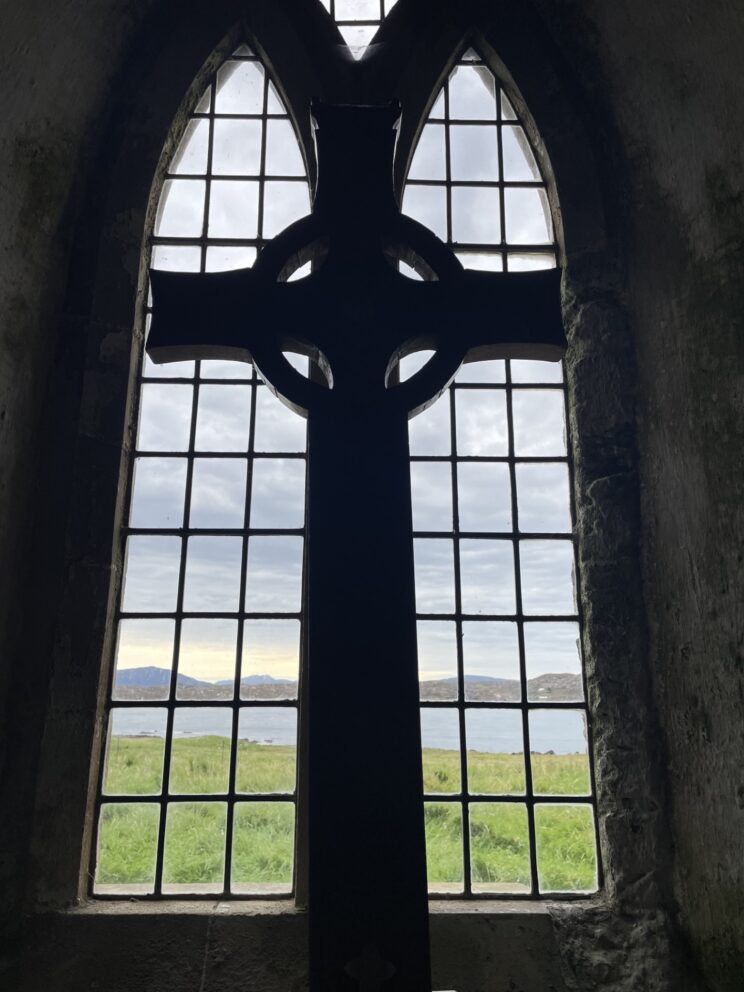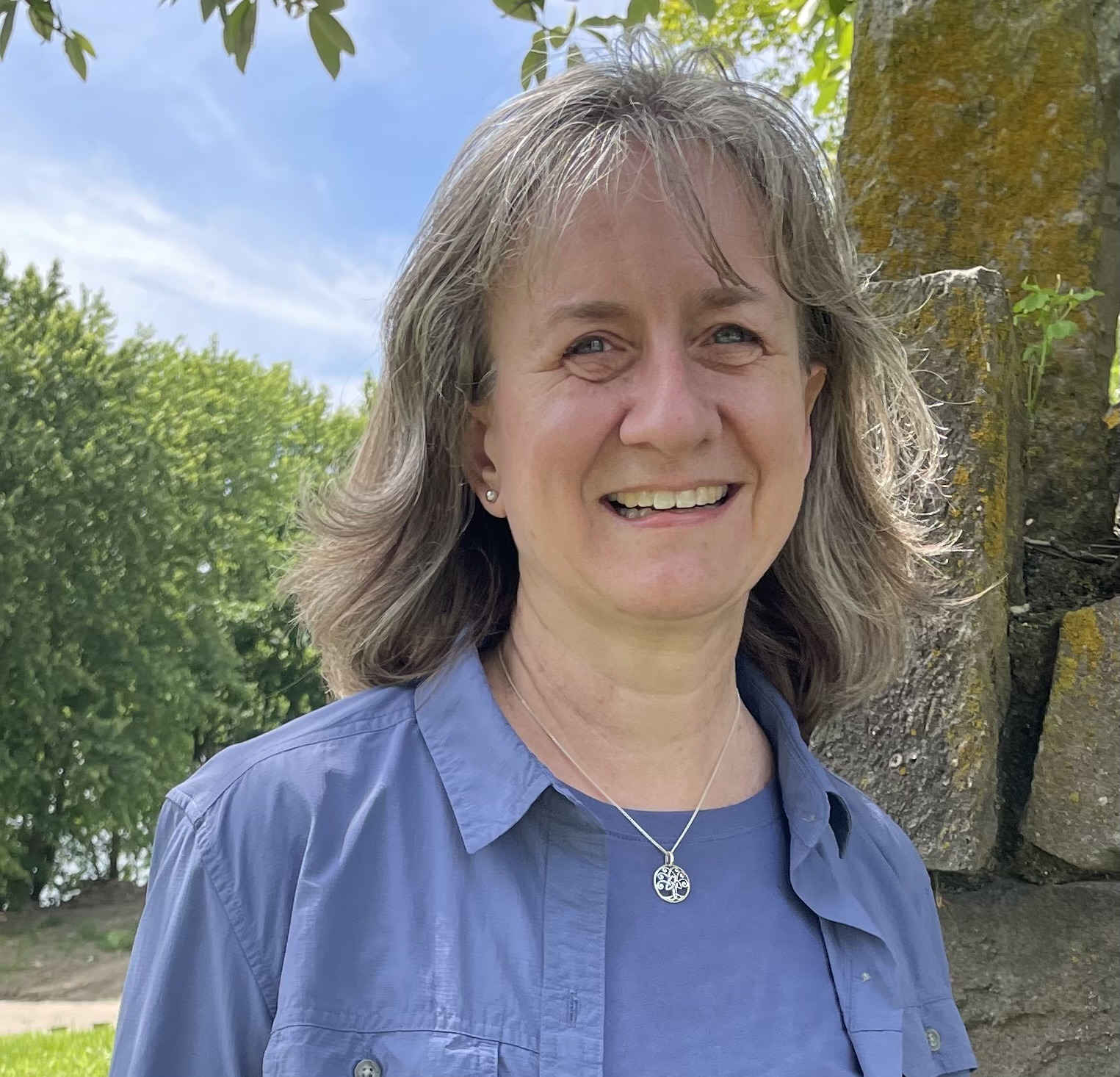
Let your prayers rise like smoke to the Great Spirit, for he will see and answer you. Every step is a prayer, and as you dance upon the earth for the things you seek, the way will open before you. In the same way, as you search for the true ancient pathways, you will find them. Answers will come to the ones who ask, good things will be found by the ones who search for them, and the way will open before the ones who keep dancing their prayers.
I love the imagery in the First Nations Version (https://firstnationsversion.com/book/first-nations-version/) of Matthew 7:7,8, that every step can be a prayer. Every step can be an awareness of our connection to God – praising, confessing, lamenting, asking, thanking, being. Yet, even on a pilgrimage to a specific site, such as I was recently on to the Isle of Iona in Scotland, this focus can be difficult.
Between the story that pilgrims leave and the story to which we are going, we are in an in-between, a liminal, space. Such a place can be uncomfortable, raise questions, and even foster fears. In this place of uncertainty, we can be tempted to heed calls that take us away from the focus of our journey in order to alleviate the discomfort for a while. For me this included paying more attention to finding the next restaurant, activity, or souvenir instead of facing some of the hard realities God was bringing to light while I was on Iona.
Yet, as pilgrims come to learn, being attentive to God during the journey is a key part of the process. Practices such as saying morning, afternoon, or evening prayers; praying short phrases of scripture while walking; bringing images of Gospel stories to mind; and even taking time to feel God’s pleasure in play can help us attune to God’s presence and God’s invitations along the way.
These practices don’t merely keep us heading in the right direction, God has created us so that these practices can help transform our minds. As the psychiatrist Curt Thompson writes,
All of the spiritual disciplines both require and support the skill of mindful attention, which enables us to set our minds on the Spirit. When we pay attention to what we are paying attention to and when God’s voice (telling us we are his sons and daughters whom he loves and in whom he takes great pleasure) is the most resonant tone to which we are listening, our minds – specifically the prefrontal cortex-tend to be more integrated.” (178).
While on pilgrimage to Iona God was gracious to continue turning me back to him, especially through the creative practices that our pilgrim guide invited us into, as well as some breath prayers and journaling. Slowly it became more natural to be aware of God than to distract myself.
However, such practices aren’t only for times of pilgrimage away from our homes. Each day we find ourselves in liminal spaces and in need of ways to help us be aware of God’s presence. While walking across campus to the class, waiting for the response to a grant proposal, or researching the next project, we encounter opportunities to turn our minds to God. This could look like repeating a prayer of thanksgiving before turning on the computer or praying words of praise while taking deep, slow breaths before entering the classroom. It could be writing a psalm in response to a conference or singing a hymn as you drive to work.
Who knows, with the work of the Spirit in such practices we may come to a time when we do see every step as a prayer and God’s presence with us along the way.
REFLECTION QUESTIONS
What spiritual disciplines (prayer, journaling, scripture, community) help you be more attentive to God’s presence with you on campus and in your work?
Is there a new practice you would like to try during this season?
ADDITIONAL RESOURCES
Thompson, Curt. Anatomy of the Soul: Surprising Connections between Neuroscience and Spiritual Practices, 2010
Calhoun, Adele Ahlberg. Spiritual Disciplines Handbook: Practices that Transform Us, 2015
In anticipation of the next Via Divina online pilgrimage, The Harmony Way, pilgrimage director Jamie Noyd is sharing six spiritual practices of pilgrims over the next weeks before The Harmony Way begins on October 14. This is the fourth in the series. Visit the landing page for The Harmony Way for more information and to register.
Previous posts in the series:
Pilgrimage Practices (#1): Becoming Aware of our Stories
Pilgrimage Practices (#2): Walking
Pilgrimage Practices (#3): Place

Jamie serves with InterVarsity Graduate and Faculty Ministries as an Associate Director of Faculty Ministry and as interim Director of the Emerging Scholars Network. Among other things, in this work she enjoys the opportunity to put into practice her doctoral research in literary pilgrimage and training in spiritual direction. She also ministers with the local faculty community at the University of Cincinnati.

Leave a Reply